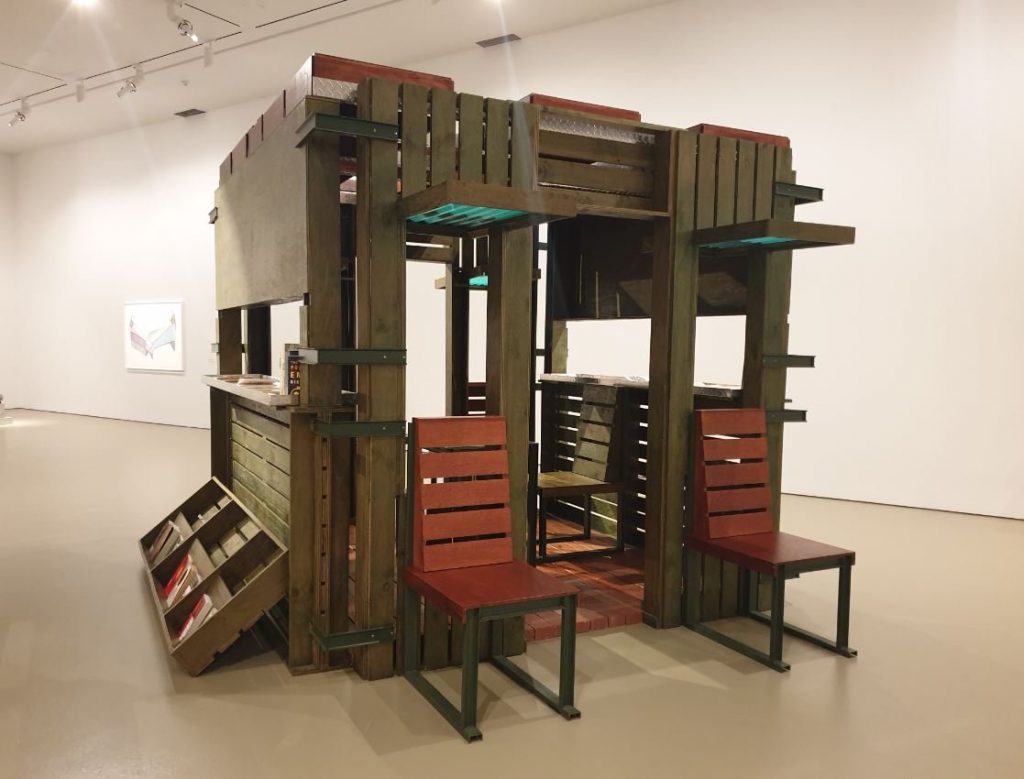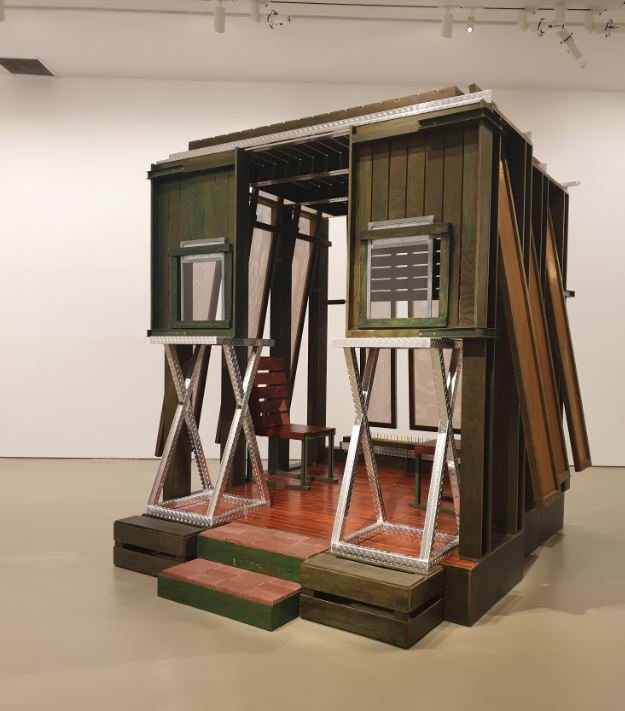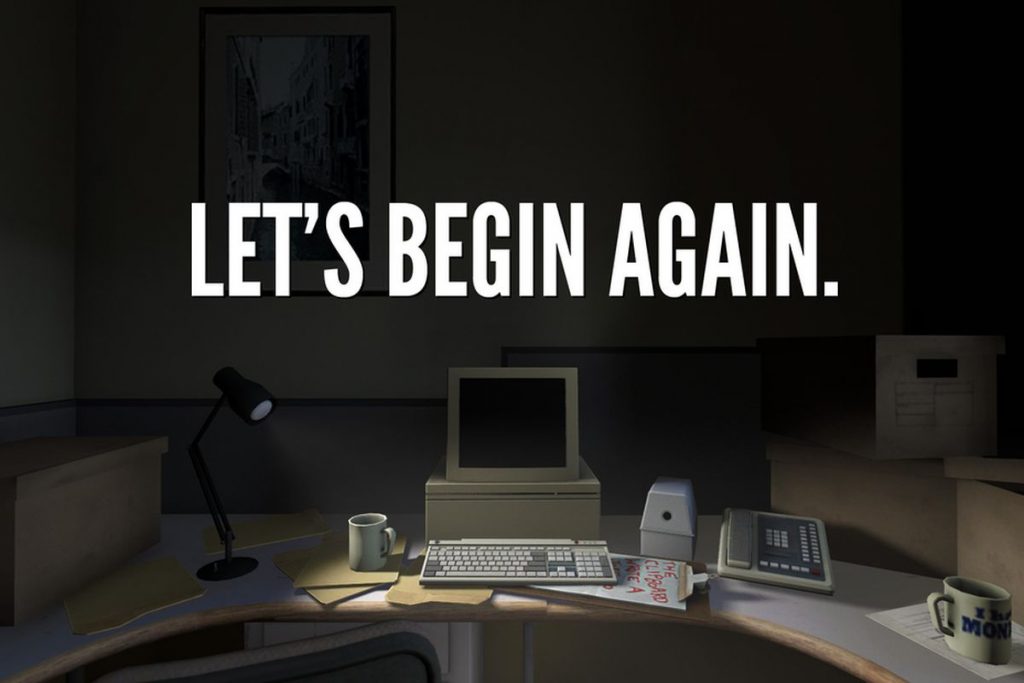When I go to an exhibition or museum, I’m usually just immersed in the visuals alone. But this exhibition allowed us to touch the installations. Needless to say, I was even more enthralled. What caught my eye most was the sheltered reading room with a single tale and chair inside. As I got closer to it, I noticed the materials that were used: wooden planks with rustic colours, common textured metal sheets, and even this green plastic shelter. Seeing all these materials together evoked a warm and calm feeling from within me. It was as though these structures were trying to replicate my childhood memories, presenting them as a physical architecture.


I remember the tour guide mentioning how the structures can make us feel a sense of comfort, yet puts us slightly on edge through hostile looking elements such as the up right pencils that resemble an army or spikes, and how the chair is not sift like a couch, making you shift around in it. But I didn’t get a single hostile vibe from them. Instead, I actually found the arrangement of pencils cute, playful even, and the chairs were actually very comfortable, possibly because wooden chairs and furniture was what I grew up using.


The guide also explained how the rules of setting up the installations were that they have to be placed at 90 degree angles in relation to one another. This was another element that was supposed to add stiffness to the otherwise inviting reading room. However, for me, I guess the combination of materials really overpowered these hostile elements. There’s just something about the little wooden reading room and how the light streams in through the gaps of the shelter, giving the wooden table inside a soft warm glow. All of that just made it such a cozy place. Even the two other installations with just chairs and tables also didn’t seen rigid, perhaps due to the fact that they were more asymmetrical (and also mainly wooden). The feeling and memories evoked by the materials used made me think about the reading on atmospheres in architecture; how the looks, sounds, and textures of different material can pull up various memories from the audience, and linking those memories and feelings to the architecture gives it its atmosphere.

Another part of the fieldtrip that I enjoyed was the short films screening, my favourite two being Rotating Line, To Perceive 10,000 Different Squares in 6 Minutes and 55 Seconds. Rotating Line was interesting in that it chose a unique angle to show the rotation of a line. What seemed to be a line getting shorter and shorter, before extending again, was actually a side view of the rotating line, implying that it was 3 dimensional. And for the second film, I’ve never spent so much time looking at a single square, or rather, 10,000 squares. Each frame shows a square that is smaller than the previous one, but the differences were so minute I was fairly certain it wasn’t actually getting any smaller. So, naturally, I decided to cheat and took two pictures of the square on screen, each about 3000 frames apart. By comparison, I did see a very slight difference in size, and hopefully that’s not just my mind playing tricks on me. Regardless, all the films showed how Siah Armajani used technology to create the illusion of three-dimensional space and time.


